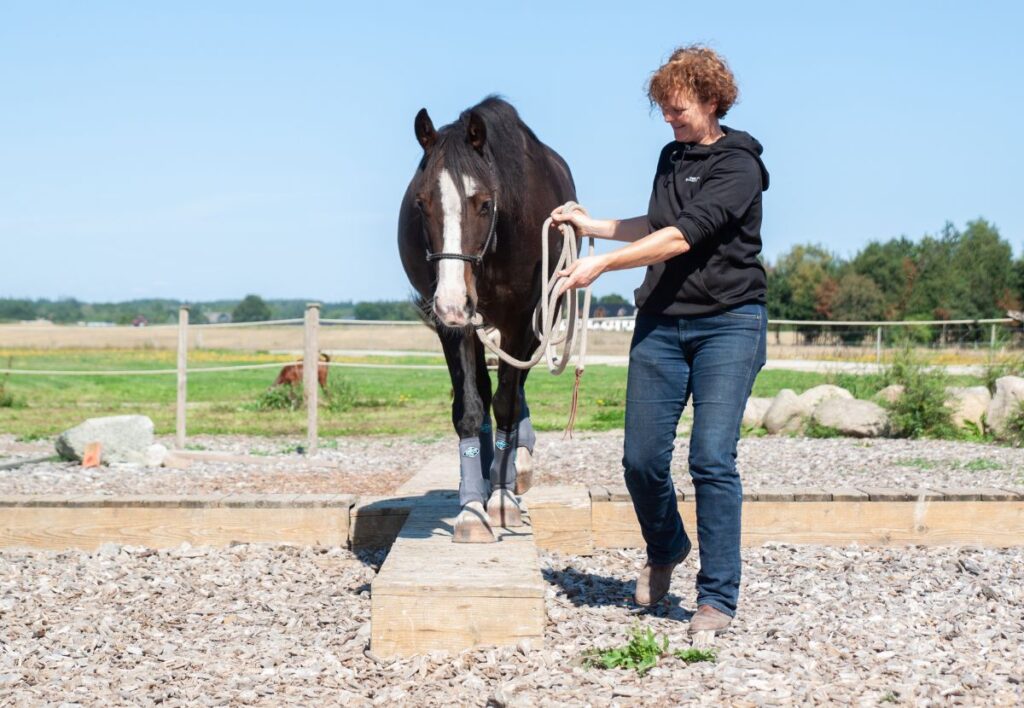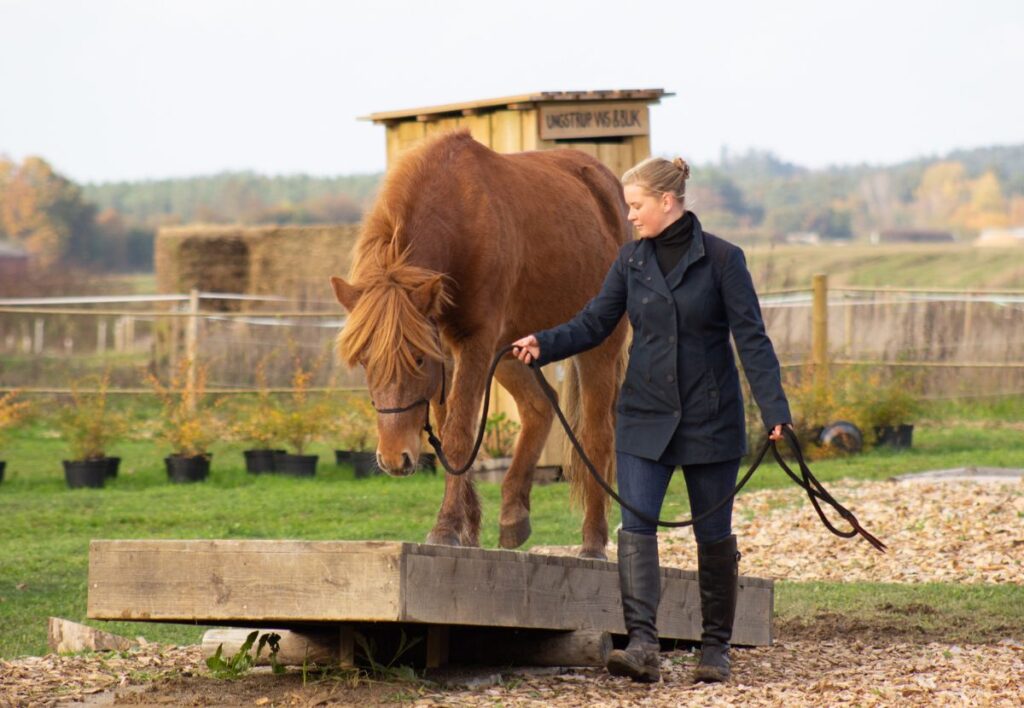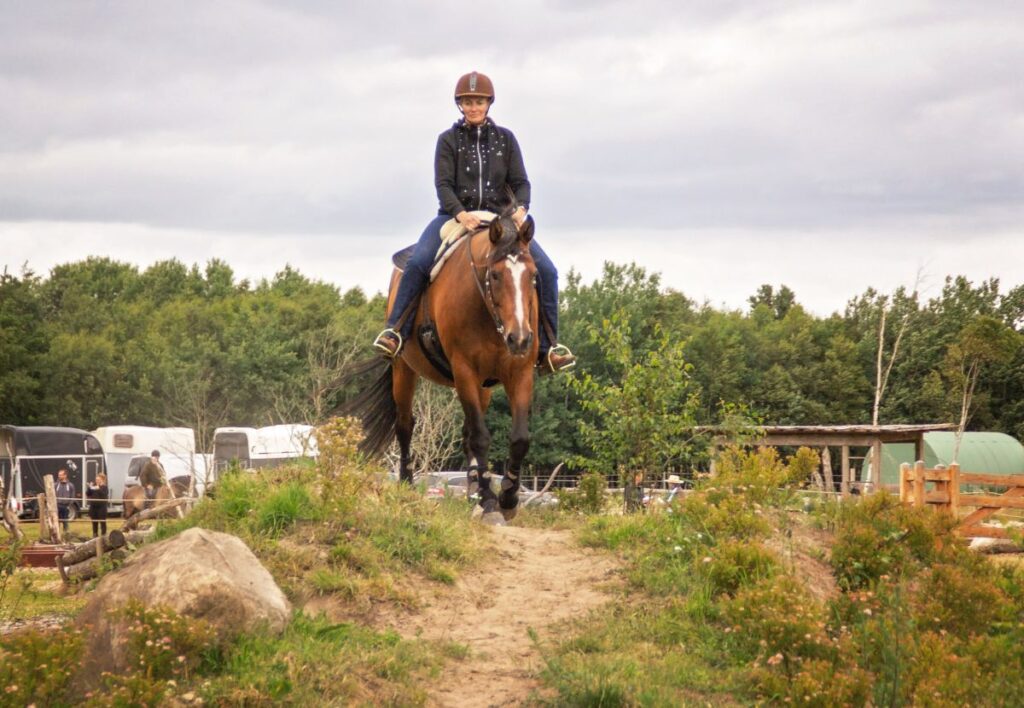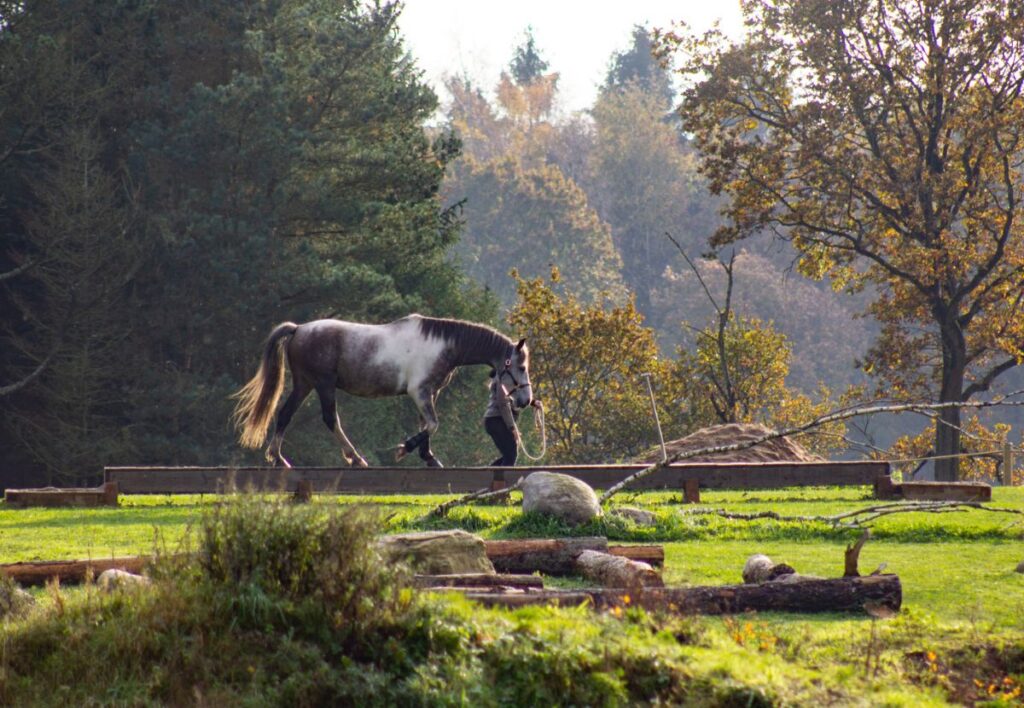Menu

This series will shed light on some different disciplines. In the equestrian world, there are more than 50 different disciplines worldwide, each with even more sub disciplines. Most of us do one, two or maximum three disciplines, but what do other equestrians do? We hope this series might help create awareness, show equalities or differences and maybe spark interests.
If Mountain Trail is a new discipline for you, it can be described quite briefly: It's about partnership and collaboration between you and your horse. Although this should naturally be the focus in all riding and handling of horses, it's particularly important in the discipline of Mountain Trail. In Mountain Trail, the goal is to create courage and ensure that both horse and rider are safe in all terrains - one obstacle at a time.
The aim of Mountain Trail is to reflect riding in the mountains and in nature in general. The horse and rider must demonstrate that they can pass obstacles calmly and safely in a harmonious interaction. This can be done from the ground as well as from the saddle, making the discipline open to all types of riders and horses regardless of level. The goal is to create brave and confident pairs that can tackle both large and small challenges, reminiscent of those encountered in nature. The most important aspect is to focus on the behaviour and cooperation between the horse and rider.
Unlike the disciplines of trail and agility, the obstacles in Mountain Trail have a more natural appearance, such as branches, ditches, tree trunks, and hills, which you must navigate together.

Mountain Trail emerged in 2001 at the Oregon Horse Center. A western trainer had organized a competition where trail classes were set up with tree trunks and other natural obstacles. The idea of reviving many of the old-style trail shows created huge interest in the horse industry. Mark Bolender saw potential in the new sport and has since promoted it worldwide by establishing Mountain Trail courses in the USA, Canada, Australia, and Europe.
Subsequently, Mark Bolender has worked diligently to spread the sport through books, articles, and clinics worldwide. Additionally, he established the set of rules that are used. In many countries, that is still the set of rules that are used, but many countries plan to develop specific rules.
The whole idea behind the obstacles in Mountain Trail is to make them as natural as possible. These could include:
There can also be exercises that require dismounting and remounting during the course.

- Quote from the founder of Mountain Trail, Mark Bolender.
In Mountain Trail, there aren't strict requirements for equipment – it just needs to be clean, in good condition, and fitted to the horse. This means you can ride in anything from a halter and bitless bridle to a regular bridle with a bit, but specific rules may apply at each event. Attention may also be paid to the appearance of the equipment – it should not only fit the horse, but aesthetics can also be important.
All breeds can essentially be used for Mountain Trail, as long as they are curious and willing to tackle new challenges with their riders. Even young horses can participate, as they can simply participate with the rider from the ground. This means there is room for everything from Icelandic horses to large warmbloods!

If you're interested in trying Mountain Trail with your horse, it's recommended to take an introductory course at one of the many Horse Parks. Here, one of the park's instructors will go through different types of obstacles so that both you and your horse become comfortable with them.
Even young and older horses can join in, as well as owners any age. At competitions, horses can participate with riders from the ground in the calendar year the horse turns 2 years old.
Mountain Trail competitions requires to have a judge certified as a Mountain Trail judge before you can arrange these events.
In competitions, you compete in Level 1, Level 2, or Level 3. It's possible to complete all three levels from the ground or on horseback.
Every horse and rider should start here if Mountain Trail is new to them. The obstacles will be easy, and as a starting point, they should be completed at a walk, focusing on technique and completing the obstacles.
If you and your horse have mastered the basics, you can try Level 2. Here, you must show that you have good teamwork and mutual trust when completing the different exercises. Additionally, the obstacle course will be longer. It may also be necessary to trot, tölt, or similar either before or between exercises. Furthermore, there may also be 180, 270, or 360-degree turns on selected obstacles.
Here, you really need a good partnership! The course will be longer, and you must be able to complete difficult exercises. Cantering may be included either before or between obstacles, as well as similar turns to those in Level 2.
At a Mountain Trail competition, it's possible to participate in two levels with the same horse. However, it must be either Level 1 and 2 or Level 2 and 3.

When participating in a competition, you start with 70 points when entering the course. You're evaluated on the horse and rider's ability to navigate the course. The judge then awards points with either 0 or minus points, but it's possible to award +1 for particularly impressive performances. Each exercise has a value of 9 points. Judges assess points for entry to the course, navigation, exit, and there are also both wow points and horsemanship points.
Handler: This could be a child aged at least 6 years or a pair with a handicap that needs to be led.
Child/Junior: This group covers participants under 18 years old as of January 1st and at least 6 years old. There will be classes for both 6-11 year olds and 12-year-olds.
Adult: Participation only requires that you are more than 18 years old as of January.
Open: Everyone can participate. Coaches can only participate in this category.
Find your nearest Mountain Trail park and contact them or find an instructor.
https://mountaintrail.dk/om-mountain-trail
https://imtca.org/wp-content/uploads/2022/03/2022_IMTCA_Rulebook_-Fnl_A.pdf
https://www.bolenderhorsepark.com/imtca-about
https://djurshorsepark.horsepark.dk/om-os